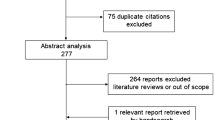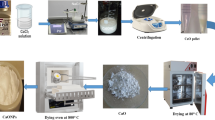Abstract
Conventional anticancer drug sensitivity testing methods, such as succinate dehydrogenase inhibition (SDI), histoculture drug-response assay (HDRA) and collagen gel droplet embedded culture drug sensitivity testing (CD-DST), all require primary culturing and are extremely complex tests that require considerable time for analysis. A major drawback of these methods is that if culturing is not performed properly, ambiguous results are produced. Therefore, we developed an oxygen electrode apparatus that uses cellular metabolism as an indicator of anticancer drug sensitivity and investigated its usefulness in 29 breast cancer patients with the following histopathological classifications: papillotubular carcinoma (n = 15); solid tubular carcinoma (n = 6); and scirrhous carcinoma (n = 8). Comparison of anticancer drug sensitivity testing results obtained using the conventional HDRA method and those obtained using the oxygen electrode apparatus showed significant reproducibility between the two methods. In addition, similar anticancer drug sensitivity testing results using the oxygen electrode apparatus were obtained for in vivo testing of nude mice transplanted with established cancer cell lines. These findings suggest that the oxygen electrode apparatus is a useful procedure in anticancer drug sensitivity testing that provides better reproducibility and that is faster, more convenient, and less expensive than other testing methods.
Similar content being viewed by others
References
Ariyoshi Y, Shimahara M, Tanigawa N et al. Study on chemosensivity of oral squamous cell carcinomas by histoculture drug response assay. Oral Oncol 2003; 39: 701–7.
Suda S, Akiyama S, Sekiguchi H et al. Evalution of the histoculture drug response assay as a sensitivity test for anticancer agents. Surg Today 2002; 32: 477–81.
Schrag D, Garewal HS, Burstein HJ et al. American society of clinical oncology technology assessment: chemotherapy sensitivity and resistance assays. J Clin Oncol 2004; 22: 3631–8.
Cree IA, Kurbacher CM, Lamont A et al. A prospective randomized controlled trial of tumour chemosensitivity assay directed chemotherapy versus physician’s choice in patients with recurrent platinum-resistant ovarian cancer. Anticancer Drugs 2007; 18: 1093–101.
Park JG, Kramer BS, Steinberg SM et al. Chemosensitivity testing of human colorectal carcinoma cell line using a tetrazolium-based colorimetric assay. Cancer Res 1987; 47: 5875–9.
Furukawa T, Kubota T, Hoffman RM et al. Clinical applications of the histoculture drug response assay. Clin Cancer Res 1995; 1: 305–11.
Tanigawa N, Kitaoka A, Yamakawa K et al. In vitro chemosensitivity testing of human tumours by collagen gel droplet culture and image analysis. Anticancer Res 1996; 16: 1925–30.
Kobayashi H. Development of a new in vitro chemosensitivity test using collagen gel droplet embedded culture and image analysis for clinical usefulness. Recent Results Cancer Res 2003; 161: 48–61.
Komoto C, Nakamura T, Ohmoto N et al. Three-dimensional, but not two-dimensional, culture results in tumor growth enhancement after exposure to anticancer drugs. Kobe J Med Sci 2007; 53: 335.
Salmon SE, Hamburger AW, Soehnlen R et al. Quantitation of differential sensitivity of human tumor stem cells to anticancer drugs. N Engl J Med 1978; 298: 1321–7.
Kondo T, Imamura T, Ichibashi H et al. In vitro test for sensitivity of tumor to carcinostaric agent. Gann 1966; 57: 113–21.
Amano Y, Okumura C, Yoshida M et al. Measuring respiration of cultured cell with oxygen electrode as a metabolic indicator for drug screening. Hum Cell 1999; 12: 3–10.
Uesu K, Ishikawa H. Analysis of an in vitro susceptibility test of anticancer drugs using new types of oxygen electrodes. Bull Edu Res Nippon Univ Sch Dent Matsudo, 2005; 7: 7–21.
Ishiwata I, Ishiwata C, Tsuiki A et al. Establishment and characterization of a human gestational Choriocarcinoma cell line (HOCC). Hum Cell 2004; 17: 33–41.
Samson DJ, Seidenfeld J, Ziegler K et al. Chemotherapy sensitivity and resistance assay. J Clin Oncol 2004; 22: 3618–30.
Kondo T, Kubota T, Tanimura T et al. Cumulative results of chemosensitivity tests for antitumor agents in Japan. Anticancer Res 2000; 20: 2389–92.
Fandi A, Taamma A, Azli N et al. Palliative treatment with low-dose continuous infusion 5-fluorouracil in recurrent and/or metastatic undifferentiated nasopha-ryngeal carcinoma type. Head and Neck 1997; 19: 41–7.
Gandia D, Wibault P, Guilot T et al. Simultaneous chemoradiotherapy as salvage treatment in locoregional recurrence of squamous head and neck cancer. Head and Neck 1993; 15: 8–15.
Author information
Authors and Affiliations
Corresponding author
Rights and permissions
About this article
Cite this article
Suzuki, M., Ishikawa, H., Tanaka, A. et al. Anticancer drug sensitivity testing using an oxygen electrode apparatus. Hum Cell 23, 103–112 (2010). https://doi.org/10.1111/j.1749-0774.2010.00092.x
Received:
Accepted:
Issue Date:
DOI: https://doi.org/10.1111/j.1749-0774.2010.00092.x




